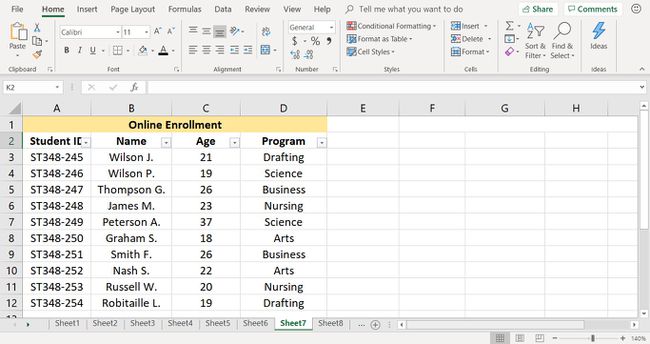5 Ways to Make Excel Sheets Shareable and Editable

In today's collaborative work environment, sharing and editing Excel sheets efficiently has become essential. Whether you're working on project management, financial reporting, or data analysis, ensuring that your Excel documents are shareable and editable can significantly boost productivity and collaboration. Here are five effective ways to make your Excel sheets shareable and editable, with insights into each method's functionality and use cases.
1. Using OneDrive for Excel Online

Microsoft’s OneDrive integrates seamlessly with Excel, allowing users to share spreadsheets in real time:
- Upload your Excel file: Simply upload your file to OneDrive.
- Share: Use the ‘Share’ button to send invitations to other users with customizable permissions (edit, view only, etc.).
- Real-time editing: Collaborators can work on the same sheet simultaneously, with changes appearing live for all users.
💡 Note: OneDrive provides autosave features, preventing data loss from unexpected application crashes.

2. Google Sheets as an Alternative

For a more web-based approach, Google Sheets offers robust sharing capabilities:
- Convert and import: Import your Excel file into Google Sheets via Google Drive.
- Share permissions: Easily adjust who can view or edit the spreadsheet through granular sharing options.
- Real-time collaboration: All changes are instantly synced, and collaborators can see edits as they occur.
- Version control: Google Sheets automatically saves versions, allowing you to revert to past iterations if needed.
🌐 Note: While importing from Excel, some complex functions or macros might not translate perfectly; always review your sheet after conversion.

3. Excel’s Co-authoring Feature

If you’re using the latest versions of Excel (2016 or later), you can use co-authoring:
- Save to OneDrive or SharePoint: Ensure your Excel file is saved in OneDrive or on your organization’s SharePoint.
- Simultaneous editing: Multiple users can work on the same file, with color-coded edits to track changes.
- Resolution of Conflicts: Excel handles conflicts smartly, merging changes where possible or allowing users to choose which changes to keep.
🔄 Note: Changes can sometimes overwrite each other; communication between co-editors is key to prevent data loss.

4. Sharing via Email Attachments

While not the most sophisticated method, it remains widely used:
- Attach the file: Simply attach the Excel file in an email to share with others.
- Track changes: Use Excel’s ‘Track Changes’ feature before sending to monitor edits upon receiving the file back.
- Send with feedback: Include instructions or comments in the email to guide users on what to edit or review.
📩 Note: This method lacks real-time collaboration, which might lead to version control issues.
5. Using Third-Party Tools

There are several third-party tools designed to enhance Excel sharing:
- Dropbox: Similar to OneDrive, you can share Excel files through Dropbox, with change tracking and notifications.
- Box: Offers similar functionality, with added features like document versioning and commenting on specific cells.
- Slack: While not a traditional file-sharing platform, Slack can be used to send files, and you can track edits through threads.
🔍 Note: Always review the security and privacy policies of third-party tools, especially when dealing with sensitive data.
In summary, each of these methods has its merits, depending on your collaboration needs. OneDrive or Excel’s built-in co-authoring might be the best choice for those already within the Microsoft ecosystem. Google Sheets provides a robust alternative, especially for those who prefer a web-based platform. Traditional email sharing still works for one-off edits, and third-party tools offer extra functionality for those willing to explore outside Microsoft’s offerings.
By leveraging these methods, you can foster a more collaborative work environment where sharing and editing Excel sheets becomes effortless, promoting efficiency, accuracy, and team synergy. The choice of method depends on your specific needs, security requirements, and the platform your team is most comfortable with.
How can I secure sensitive data in shared spreadsheets?

+
Use password protection on the Excel file itself, and only share the password with trusted individuals. Additionally, consider using cloud services that offer encryption like OneDrive or Box.
Can I use all these methods on my mobile device?

+
Yes, most of these methods have mobile apps or responsive web interfaces, allowing for on-the-go editing and collaboration.
What happens if multiple users edit the same cell simultaneously?

+
Excel and Google Sheets handle conflicts differently. Excel merges changes when possible or lets users resolve conflicts. Google Sheets will apply the last change made.



